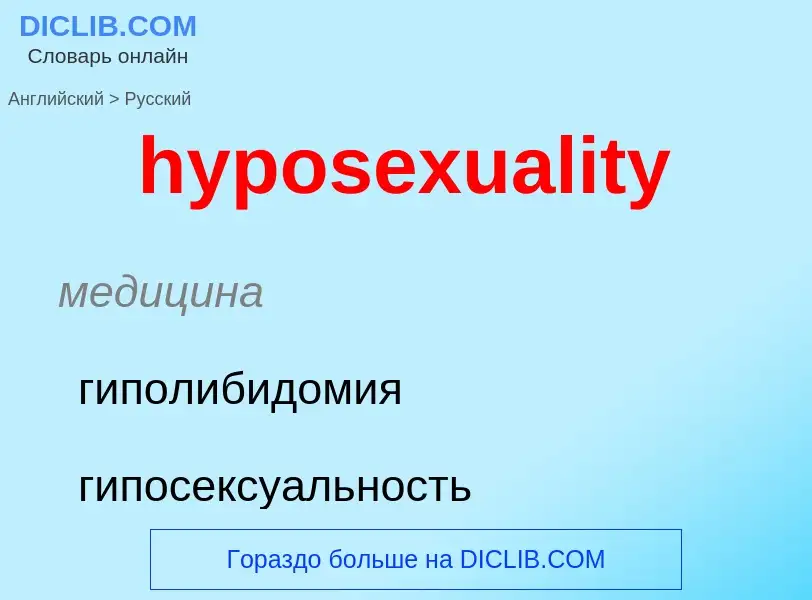ترجمة وتحليل الكلمات عن طريق الذكاء الاصطناعي ChatGPT
في هذه الصفحة يمكنك الحصول على تحليل مفصل لكلمة أو عبارة باستخدام أفضل تقنيات الذكاء الاصطناعي المتوفرة اليوم:
- كيف يتم استخدام الكلمة في اللغة
- تردد الكلمة
- ما إذا كانت الكلمة تستخدم في كثير من الأحيان في اللغة المنطوقة أو المكتوبة
- خيارات الترجمة إلى الروسية أو الإسبانية، على التوالي
- أمثلة على استخدام الكلمة (عدة عبارات مع الترجمة)
- أصل الكلمة
hyposexuality - ترجمة إلى الروسية
медицина
гиполибидомия
гипосексуальность
تعريف
ويكيبيديا
Hypoactive sexual desire disorder (HSDD), hyposexuality or inhibited sexual desire (ISD) is sometimes considered a sexual dysfunction, and is characterized as a lack or absence of sexual fantasies and desire for sexual activity, as judged by a clinician. For this to be regarded as a disorder, it must cause marked distress or interpersonal difficulties and not be better accounted for by another mental disorder, a drug (legal or illegal), or some other medical condition. A person with ISD will not start, or respond to their partner's desire for, sexual activity. HSDD affects approximately 10% of all pre-menopausal women in the United States, or about 6 million women.
There are various subtypes. HSDD can be general (general lack of sexual desire) or situational (still has sexual desire but lacks sexual desire for current partner), and it can be acquired (HSDD started after a period of normal sexual functioning) or lifelong (the person has always had no/low sexual desire).
In the DSM-5, HSDD was split into male hypoactive sexual desire disorder and female sexual interest/arousal disorder. It was first included in the DSM-III under the name inhibited sexual desire disorder, but the name was changed in the DSM-III-R. Other terms used to describe the phenomenon include sexual aversion and sexual apathy. More informal or colloquial terms are frigidity and frigidness.

